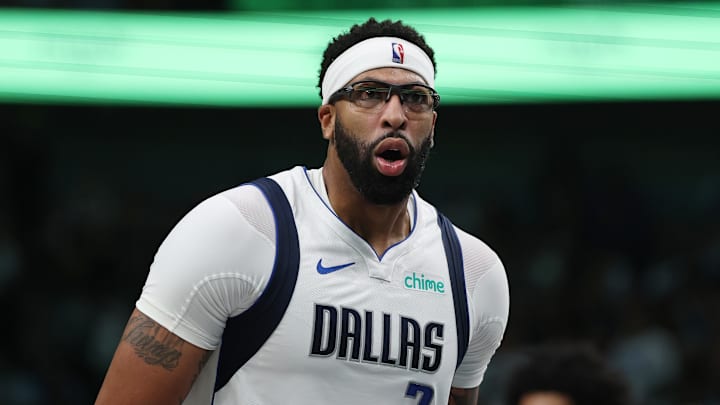The Dallas Mavericks have committed to building around a frontcourt that's flush with size, talent, and dominant defensive potential. Five-time All-NBA and All-Defense honoree Anthony Davis headlines a gigantic and captivating group that includes Cooper Flagg, Daniel Gafford, Dereck Lively II, and P.J. Washington.
Unfortunately, the Mavericks' intention to overwhelm teams with their size has been hindered by injuries and an unspoken flaw: Lackluster three-point shooting.
The instant retort would be that a healthy Kyrie Irving and an in-form Klay Thompson would instantly help Dallas improve its shooting. Irving is a career 39.4 percent shooter from beyond the arc and Thompson is a generational marksman with a figure of 41.0 percent through 871 appearances.
Unfortunately, Irving is still recovering from the torn ACL he sustained in March and Thompson is shooting just 29.4 percent from distance in 2025-26.
For as intriguing as it is to consider what Dallas' offense may look like once they're healthy and playing like themselves, Irving and Thompson alone can't resolve this issue. The Mavericks are struggling to shoot as a team and may not have the ideal personnel to overcome that issue.
Even if injuries weren't an expected hurdle that Dallas is attempting to overcome, the lack of shooters could derail the opportunity to dominate the interior.
Mavericks have elite frontcourt depth but lackluster shooting
Davis, Gafford, and Lively are interior-based bigs who have never been confused with sharpshooters from beyond the arc. Washington is a career 35.4 percent shooter from distance, but he's on pace to shoot 32.0 percent or worse for the second time in three seasons.
Flagg shot 38.5 percent from three-point range as a freshman in college in 2024-25, but is inevitably experiencing first-year NBA hurdles at 28.6 percent in 2025-26.
That alone creates quite a conundrum for head coach Jason Kidd as he figures out how to employ his rotation of five starting-caliber frontcourt players. Flagg and Washington improving their respective outside shots would certainly help, but that still leaves three non-shooters in Davis, Gafford, and Lively.
That issue can be circumvented and even turned into a strength with the ideal spacing around them, but there's ample reason for skepticism that such can be achieved.
D'Angelo Russell is a career 36.4 percent shooter from three-point range, but is on pace to convert just 31.4 percent of his attempts for a second consecutive season. Brandon Williams is making headlines early in 2025-26, but is a career 31.6 percent shooter himself.
Naji Marshall looked the part of a breakout player in 2024-25, but is a career 30.1 percent shooter from distance and is struggling to find his fit with the new-look team in 2025-26.
If the quartet of Max Christie, Irving, Russell, and Thompson simply shoot up to their capabilities, the current concerns could be effectively erased. The harsh reality facing the Mavericks, however, is that they've controversially decided to invest in injury-prone players and veterans in their 30s whose future form can't be confidently projected.
The idea of a dominant frontcourt is easy to get excited about, but the Mavericks desperately need the supporting cast to make it possible for the interior's dominant potential to be realized.
